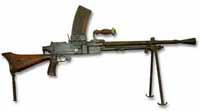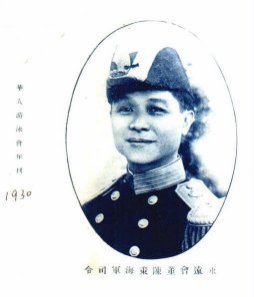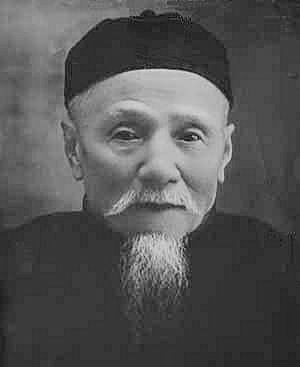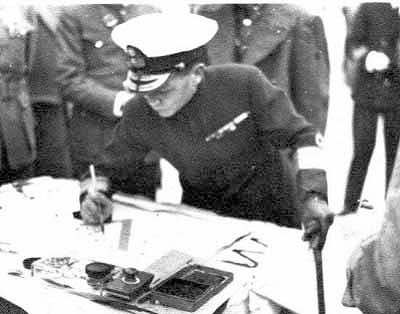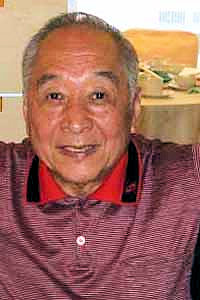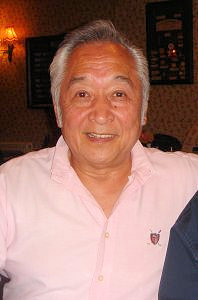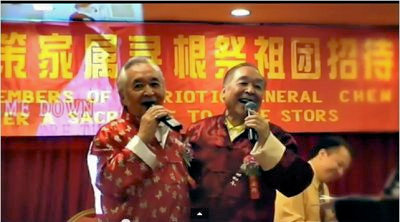Left: Admiral Chan Chakand Cmdr Hugh Montague RN (Rtrd) being greeted in Kukong.
Admiral Chan Chak was featured on the front page of the British Daily Express during the escape along with Cmdr Montague
The New Zealand Presbyterian Church Methodist Mission at Kukong was run by Peredur Jones and his wife Muriel with a staff of six missionaries and their wives. Located on the west bank where the rivers Mo Shui & the Ching Shui merged.Jean Moore: "At the southern end of this shanty town, there were two Christian Mission stations; one was Catholic, operating a school by the Salesian Fathers; the other was Protestant,incorporating the "Ho Sai" Hospital, literally translated as the Hospital on the West Bank. It was well staffed and well run. The medical superintendent of the hospital was a New Zealander of Irish origin, Dr. Samuel H Moore. Assisting him was a team of well trained Chinese doctors, backed up by a nursing school. It was perhaps the one and only really dependable hospital in the whole of war time South China. Along with Dr. Moore, were a few European Missionaries, doing their evangelical work. To reach the mission from downtown Kukong, one had to cross the Western River, by one of the two pontoon bridges, and then walk southwards for about 15 minutes. Inside the hospital campus, there were built, apart from the main hospital buildings for wards and for nurses quarters, three blocks of two storied European style buildings; one was the Medical Superintendent's Living quarters; one was for the Chinese Assistant Medical Officers; and the other for the expatriate Missionaries. In between the blocks, were well tended gardens. In the Medical Superintendent's Quarters, there was a spare guest room" [43].
Admiral Chan Chak finally had the bullet removed from his wrist by Dr S H Moore, Mooi as he was known at the Ho Sai Hospital. The Adm kept the bullet and had it mounted on a gold chain which he wore from his left lapel on ceremonial occasions.
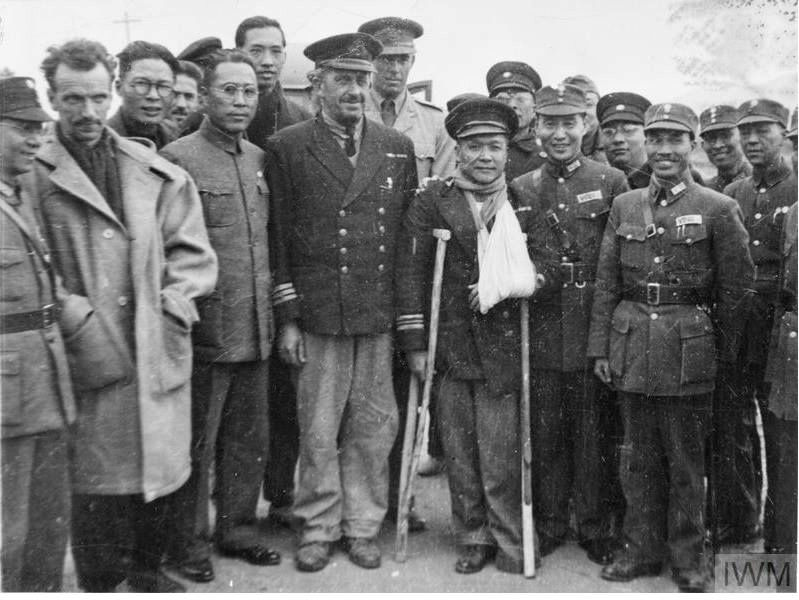
Left: Admiral Chan Chak with Commander Montague RN (Ret), Lt-Col Harry Owen-Hughes, David MacDougall, Ted Ross and Lt-Cmd Henry Hsu arriving in Kukong, Shaoguan, 6th January 1942
Photo IWM ©
Jean Moore: "Mooi had removed the bullet from his wrist but he had hemorrhaged from a gastric ulcer which was no longer quiescent due to congratulatory feasts en route to Kukong. He was given a blood transfusion directly from Peredur Jones, our Welsh missionary, whom he later rewarded with a bottle of whisky. [43].
After his surgery Chan Chak stayed as a guest in Dr Moore's young daughter's bedroom decorated with Mother Goose posters, receiving many VIP visitors including a decoration from President Chiang Kai Shek.
Chan Chak started to read the Christian Bible after being introduced to it by Hsu Heng (Henry) after their miraculous escape from Hong Kong.
S.K. Yee turned up at the mission wearing Hsu Heng (Henry)'s shoes carrying Henry's bible on the 5th February while Chan was convalescing, only to disappear again two days later as mysteriously as he had turned up. SK and Chan fell out over the alleged missing $40.000.
Chan Chak converted to Christianity from Buddhism after Henry saved his life prior to boarding the MTB's at Aberdeen Island, and was baptized at the Union Church in Chungking in 1942 on the anniversary of the Christmas Day escape from Hong Kong, adopting the name "Andrew. [53]
Jean Moore: "After the arrival of the sixty-five men, the next group of escapees from Hong Kong was headed by Colonel Lindsay Ride, Professor of Physiology at Hong Kong University, with two other university lecturers and Francis Lee, one of his Chinese students. Colonel Ride joined Harry Owen Hughes in the spare bedroom and it was there that the British Army Aid Group was born, a type of Ml6 organisation whose first objective was to organise en masse escapes from the prison camps in Hong Kong" [43].
6th January 1942 Kukong, Shaoguan
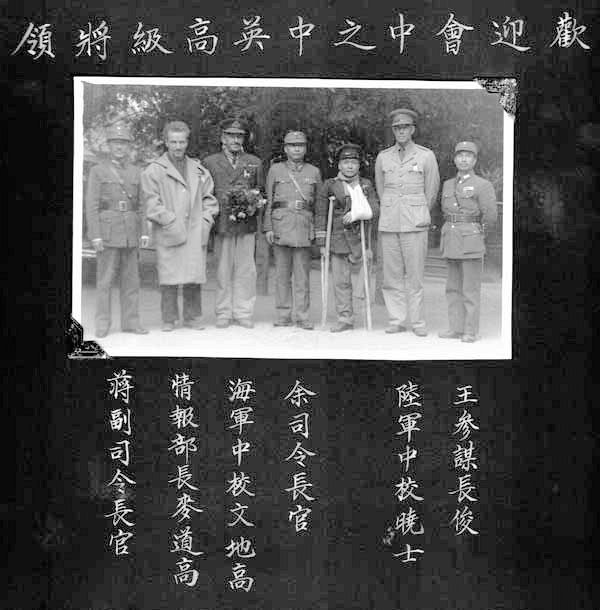
Left: British and Chinese Officers at the welcoming ceremony
Deputy Commander General Jiang Guangnai, David MacDougall, Commander Hugh Montague RN, C-in-C General Yu Hanmou, Adm Chan Chak, Lt-Colonel Harry Owen-Hughes, and Chief of Staff General Wang Jun at at Binlu, Shaoguan (Kukong) 6th January 1942.
Photo fron the Chan Chak family collection ©
Translation by Chi Man Kwong. Research Assistant Professor, History Department, Hong Kong Baptist University.
Adm Chan Chak kept the bullet removed from his left wrist, and had it mounted on a gold chain to wear on his lapel as a permanent reminder of his incredible escape from Hong Kong. After the war Chan became the first post war Mayor of Canton.
Chan's exploits during the 18 day battle and the epic escape were the stuff of legend. He became known as the Nelson of the East after the legendary Adm Lord Horatio Nelson R. N.
Admiral Chan Chak had not realised the bullet was still lodged deep in his wrist. Dr Samuel H Moore, Mooi, as he was known at the Ho Sai (Hexi) infirmary operated on him to remove the bullet. Three days later the Admiral suffered a ruptured stomach ulcer, resulting in a loss of blood. The Rev Peredur Jones aged 28, who taught at the Lingan University in Canton, was staying at the mission with his wife Dora Egwys Jones and was found to have the best blood match. Peredur volunteered to donate blood for the transfusion, it did not go well, taking over an hour to infuse due to congealing. The Admiral kept the bullet and had it mounted on a gold chain which he wore from his left lapel on ceremonial occasions. [113]
Adm Chan Chak ROC: "I then received treatment at the West River (Hexi) Hospital but I loss much blood in the process. Rev. Jones (?) voluntarily donated his blood to me; this episode was a good example of the deep friendship between us and the Allies.” [6]
Left: members of the American YMCA and New Zealand Mission greet Admiral Chan Chak and his party on arrival in Shaoguan (Kukong)
The Rev Peredur W P Jones is standing on the right with his wife Mrs Dora Egwys Jones and probably Constance Green the infirmary Matron donated his blood for Chan Chak. [6]
Jean Moore: "Mooi (Samuel) had removed the bullet from his wrist but he had haemorrhaged from a gastric ulcer which was no longer quiescent due to congratulatory feasts en route to Kukong. He was given a blood transfusion directly from Peredur Jones, our Welsh missionary, whom he later rewarded with a bottle of whisky." [43]
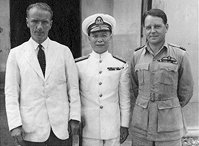
David MacDougall, Adm Chan Chak C-in-C ROC late Mayor of Canton and Wing Commander Max Oxford in June 1946 Photo from the Oxford family collection ©
Adm Chan Chak became the first post war Mayor of Canton in 1945. He resigned in 1946 to take the post of the first Commander-in-Chief of the post war Chinese Navy.
Adm Chan Chak and David MacDougall revisited Aberdeen together on Sunday 26th May 1946 and reminisced over their incredible Christmas Day escape in 1941.Members of the Christmas Day escape who returned to help rebuild the Colonony of Hong Kong after its return to British control in 1945 included
- David MacDougall Returned on 7th September 1945 as Brigadier Colonial Secretary with the Military Administration. Mac took early retirement in 1949 to take up farming in Suffolk, East Anglia, UK.
- Ted Ross Returned briefly with the British Military Mission before going on to Japan in 1946 where he worked closely with Douglas MacArther's administration. Ted returned to Hong Kong in 1951 following a year long round the world honeymoon with his bride, staying untill 1965.
- S K Yee Returned with the British Military Mission before going into banking then forming the S.K. Yee Medical Foundation
- Lt-Cmd Henry Hsu ROC Returned after retiring as Vice Admiral ROC, in business then became an international hotelier based in Hong Kong
- Colonel Harry Owen-Hughes Returned to work in D M MacDougall's administration & as Commandant of the post war HKVDC
- Lt Arthur Pittendrigh Returned to HK in 1945 to command the Maritime Police Service with the rank of Colonel.
- Lt Tommy Parsons Returned to Jardine Matheson's
- Sub-Lt Arthur Gee Returned as night editor of The China Mail
- Sq-Ldr Max Oxford RAF Returned in mid October 1945 as Deputy Director of Kai Tak International Airport
- F W (Mike) Kendall Returned working for the Philippines Airline and was based in both HK and Manila
- Monia (John) Talan Returned to run a travel business before going into laundry.
- Colin McEwan Returned as Director of physical education
- Guerrilla leader Leung Wingyuen was appointed as Colonel Advisor in the Chan Chak administration in Canton. [6]
- Admiral Chan Chak was appointed to be the first post-war Mayor of neighbouring Canton on 1st April1945. The following year he resigned to become the first post war C-in-C South China Navy. [6] [85]
The SOE escape team
Mike Kendall
Colin McEwan
[John] Monia Talan
The Author, Richard Hide the son of P.O. Buddy Hide with Adm Chan Chak's son Donald Chan with Ted Moore the son of L/S AC Moore in 1999 & 2005.
In 1999, under a portrait of Adm Chan Chak in his capacity as Mayor of Canton, Donald & Richard along with Ted Moore vowed to trace the men and/or their descendents from the iconic Waichow photo taken 30th December 1941, and to retrace the escape route from Hong Kong to Waichow, now Huizhou.
Photos from the Hide collection©
The portrait of Chan Chak while Mayor of Canton in 1945 under which we pledged to retrace the escape.
Click here to read some tributes to Adm Chan Chak
Chan Chak became the first post war Mayor of Canton after the Japanese surrender in 1945. He held this post for just over a year. In 1946 he became the first post war C-in-C South China Navy. His death was announced unexpectedly on 1st September 1949 aged 56 in Canton, now Guangzhou. On August 31, 1949, Chan had a party at his residence. His wife Leung Siu Chee who he had married in 1925 had just passed away two months earlier in Hong Kong. Amongst the guests at Chan's party was Leung Wingyuen who of course had aided in the Adm's escape in 1941. The following day Chan was found dead, he had suffered stomach ulcers during the escape and the doctor said it had flared up and burst. Chan Chak was promoted to full Adm and was accorded a funeral with full Military Honours in Canton attended by over five hundred military and Government officials.
Adm Chan Chak is buried in the Tsuen Wan Cemetery (荃灣華人永遠墳場) New Territories, Hong Kong.
Photo from the Hide collection©
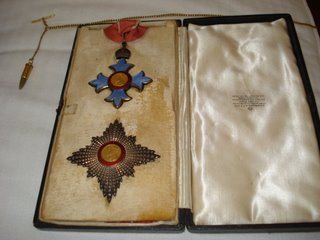
The bullet removed from his wrist, now mounted with a gold chain, along with the KBE accorded to Adm Chan Chak by Sir Horace Seymour the British Ambassador to China at Chungking on 4th November 1942 on behalf of His Majesty King George VI for his services in assisting in the defence of Hong Kong and subsequent escape of a large party of high ranking officials to Free China. Adm Chan was only the second Chinese national ever to gain this prestigious award. [62] This is considered the first act of Sino-British military co-operation against a common enemy in modern history.
Adm Chan Chak's pocket watch with the bullet removed from his wrist.
The bullet was from a 6.5mm standard Japanese Type 96 light machine-gun with a range of 600 yards (550m).
Photos from the Hide collection ©
In 1930 Chan was promoted to Rear Adm and Commander-In-Chief of the Chinese Navy by Dr. Sun Yat Sen.
Adm Chan Chak's parents Chan Hiu Shan (陳曉山) and Madam Chan Ng Lin (吳蓮)
(Run cursor over photo)
Chan Chak was born in 1895 in Shakong village in Wenchang city, King Shan County, Hainan China. When Chan was three his father took him to Singapore on a business trip. His father was a messenger between Hoi Nan and Singapore. He also pulled the rickshaw. Chan came back to his homeland at 8. By then he had two brothers. He became the leader of the village boys. When they played battle games, he won constantly. Although Chan's family was very poor, he was fortunate to attend primary school. He was a high achiever and a hard worker. Chan used all his pocket money towards books. He also attended secondary school.
In 1911 he joined Tongmenhui (“Alliance Society”) (同盟會), a revolutionary coalition led by Dr. Sun Yat Sen (孫中山) with the goal of overthrowing the Qing Dynasty. After the military uprising in Wuchang (武昌起義) on October 10, 1911, the revolutionary forces were successful in ending over 2000 years of Imperial rule. Sun Yat Sen was then elected President of the Provisional Government, and on January 1, 1912 the Republic of China was officially established.
After the establishment of the Republic of China, the country was greatly divided by different military leaders and warlords. While the Southern provinces were supporters of Sun Yat Sen, most of the Northern provinces were under Yuan ShiKai (袁世凱).
His group of Northern military leaders were known as Beiyang army. Long Jin Guang (龍覲光), an official in Guangdong, and his brother Long Jin Guang (龍濟光) were all Yuan’s men, and there was a well known incident when Chan Chak and his fellow naval students threw grenades trying to assassinate Long Jin Guang when Long came to the naval school for inspection. Long was seriously wounded but not dead. Chan Chak etc. went into hiding for a few days before returning to the school. In 1914 Chan Chak recruited 20 some fellow pro-Sen students to orchestrate a daring capture of Long’s flagship. They bravely and successfully also took Baupi ship, as well as the nearby Kanghung ship. They went straight toward Long’s government mansion, but were outnumbered by Long’s army as well as several gunboats. Defeated, Chan Chak escaped to Hong Kong. Later in 1915 he returned to Canton to resume his naval studies and graduated – at that time he was only 21 years old. Remarkable bravery and heroism at such a young age!
Yuan Sai Kai had died in 1916, and by 1921 Sun had returned to Canton from Shanghai and became “Extraordinary President” of Southern Military Government. Sen appointed Chan Jiong Ming as governor of Guangdong province. Chan Jiong Ming, who had been a follower of Sen, now differed with Sen who was focused on unification of the country by mounting a military expedition against the Northern militarists (Northern Expedition), while Chan Jiong Ming wanted a ‘federalist’ approach, i.e. “Guangdong people govern Guangdong”.
They parted ways. In June 1922 Chan Jiong Ming rebelled and attacked Sen’s presidential palace and forced Sen to seek safety on board Yung Fung warship (永豐艦), escorted safely by Chan Chak and other loyal followers.
A naval battle ensued. Sen was at Yung Fung warship for 50 some days, under the loyal, safe protection of Chan Chak. In the end Chan Jiongming recaptured Canton and forced Sen to flee to Hong Kong en route to Shanghai. This famous incident demonstrates Chan Chak’s heroism and loyalty to Sun Yat Sen. Later Yung Fung warship (永豐艦) was renamed Zhong Shan warship (中山艦) in honour of Sun. [6]
While defending Humen Uncle Chak received a wound to his left foot but was too busy repelling Japanese and before long gangrene set in. His long time friend and tennis partner David MacDougall made hasty arrangements for an appointment at St Pauls, a French Hospital in Hong Kong. In the Spring of 1938 his leg was subsequently amputated below the knee. [6]
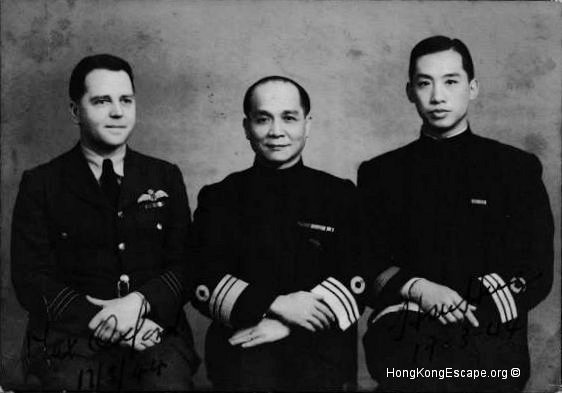
Wing Commander Max Oxford RAF , Vice Adm Chan Chak KBE ROC, & Commander Hsu Heng (Henry) O.B.E. ROC on 17th March 1944
Photo from Adm Chan Chak's collection ©
Adm Chan Chak signing documents at the Sun Yat-sen Memorial Hall in Canton now Guangzhouin, and on the rollover photo Chan is with Lt-Col Dick Hooper leaving the Japanese surrender ceremony.
(Run the cursor over the photo)
Photo from Adm Chan Chak's collection ©
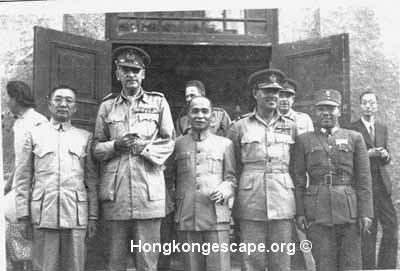 Lt-General Sir Adrian Carton de Wiart, VC, KBE, CB, CMG, DSO who was Winston Churchill's special representative to Generalissimo Chiang Kai Shek, with Chinese Adm Chan Chak KBE and other British and Chinese Military officials after de Wiart arrived in Chungking 18th December 1943.
Lt-General Sir Adrian Carton de Wiart, VC, KBE, CB, CMG, DSO who was Winston Churchill's special representative to Generalissimo Chiang Kai Shek, with Chinese Adm Chan Chak KBE and other British and Chinese Military officials after de Wiart arrived in Chungking 18th December 1943.
In a military career spanning 1899-1947, Adrian Carton de Wiart fought in 4 wars, and survived being shot in the stomach, groin, head, hand, ankle, hip and leg; surviving two plane crashes and five escape attempts from a POW camp. He lost an eye and a hand in 1915, but still won the Victoria Cross in 1916.
Churchill admired Carton de Wiart, describing him as "an old and valued friend, a model of chivalry and honour" when he wrote the foreword to Carton de Wiart's autobiography Happy Odessey.
Adrian Carton de Wiart was a guest at fellow escapee Acting Wing Commander Max Oxford's wedding to Audrey Watson in the Chungking Embassy Chapel on Saturday 8th January 1944. [30]
Photo from Adm Chan Chak's collection ©
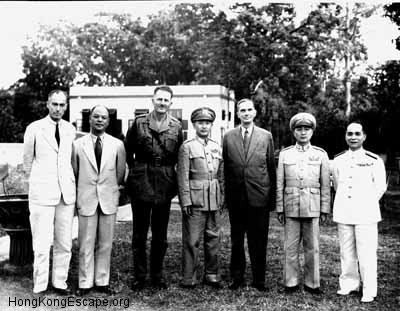
Adm Chan Chak C-in-C South China Navy with officials including Hong Kong Governor Sir Marc Young who returned as Governor on 1st May 1946, and Major General Francis Wogan Festing, C-in-C Hong Kong forces 1945-46 and again in 1949
Photo from Admiral Chan Chak's collection ©
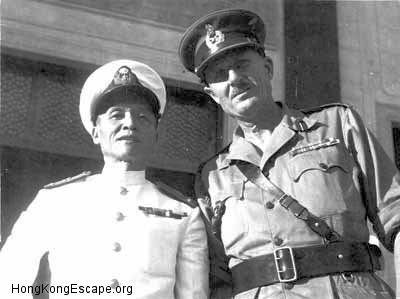
Post war photo of Admiral Chan ChakC-in-C South China Navy with Brigadier Francis Wogan Festing (Frontline Frankie) C-in-C Hong Kong 1945-1946 and again in 1949
Photo from Admiral Chan Chak's collection ©
Admiral Sir Andrew Chan Chak's funeral
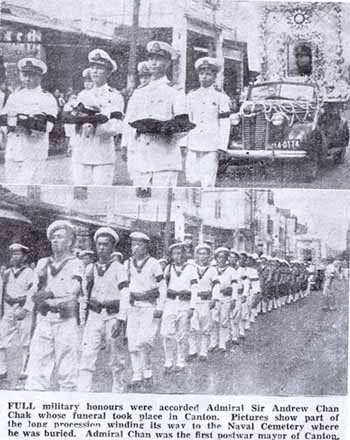
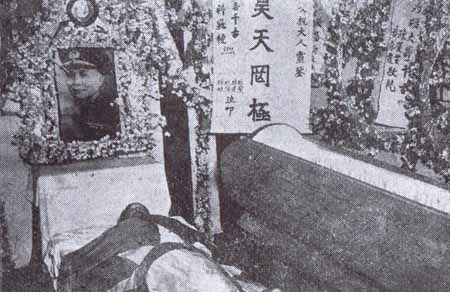
Adm Chan Chak died on 1st September 1949 in Canton, now Guangzhou, and was accorded a full military funeral as befitted the C-in-C South China Navy after lying in state.
Adm Chan Chak is buried in the Tsuen Wan Cemetery (荃灣華人永遠墳場) New Territories, Hong Kong.
Tributes to Adm Sir Andrew Chan Chak KBE ROC 1894-1949
HERO Vice-Chairman Chan On Pong (Duncan)
29th Nov 1934 - 2nd Nov 2009
Chan On Pong, (Duncan), is buried alongside his father Admiral Sir Andrew Chan Chak KBE ROC, and his twin brother Chan On Kwok, Donald, in the Tsuen Wan Cemetery (荃灣華人永遠墳場) New Territories, Hong Kong.
Photo from the Hide family collection ©
Chan On Pong (Duncan) Obituary
A tribute to Donald & Duncan Chan (MS Office Power Point 2010 or later)
A tribute to Donald & Duncan Chan (Small File)
陳安国 President HERO
29th November 1934 - 6th July 2013
Chan On Kwok, Donald, is buried alongside his father Admiral Sir Andrew Chan Chak KBE ROROC and twin brother On Pong, Duncan, in the Tsuen Wan Cemetery (荃灣華人永遠墳場) New Territories, Hong Kong.
Photos from the Hide family collection©
Chan On Kwok (Donald)
Click here for the author's journey with Donald Chan
The Chan twins in full song
Research and web publication by Buddy Hide Jnr ©
The contents of this web site led to a considerable number of escapee families contacting me and now each other, and remains the principle source of contact and private information for the spin off projects that have followed. The personal accounts enabled me to record the complete and true account of this remarkable episode of Sino-British war time co-operation. The information compiled here has directly resulted in a museum exhibition in Hong Kong, a re-enactment of the escape in Hong Kong and China, with a movie drama and documentary in the making.
Contact | Mwadui | Guest Book | Top | © MCMXCVI Hamstat Integrated Systems | Escape from Hong Kong
Site maintained by Hamstat Integrated Systems Inc
Music; Wild China by Barnaby Taylor and performed by Cheng Yu and the UK Chinese Ensemble
HTML5 requires a recent, fully-updated web browser. If you experience any problems, you need to update your browser.
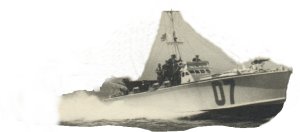

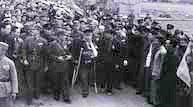
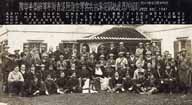

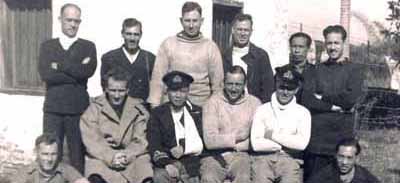
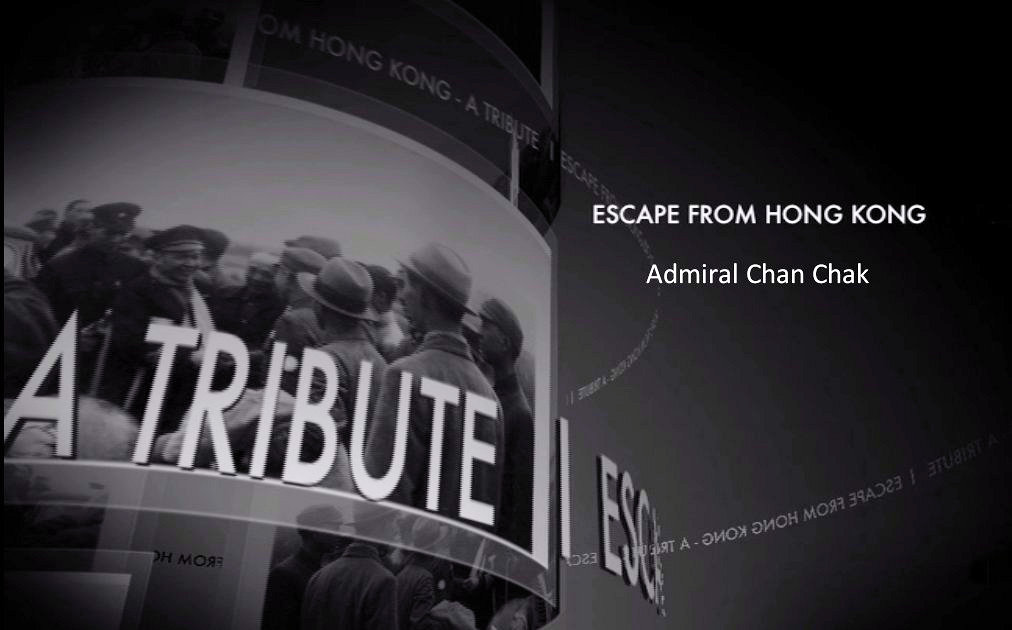
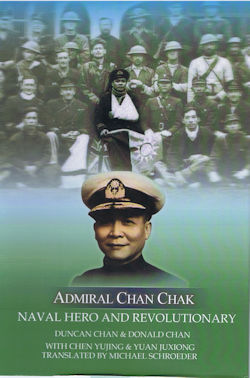
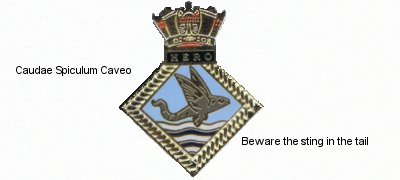
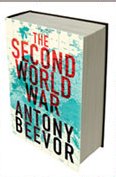
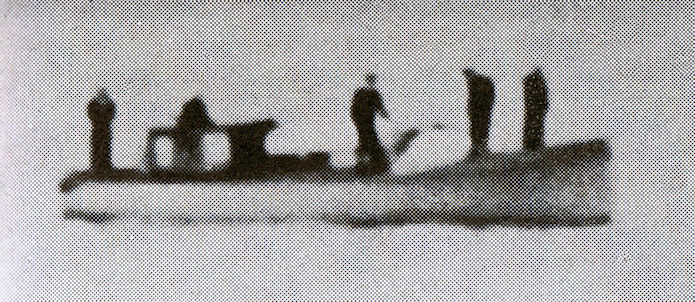
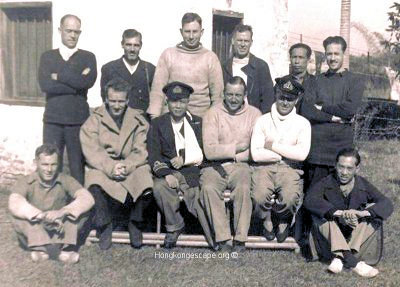
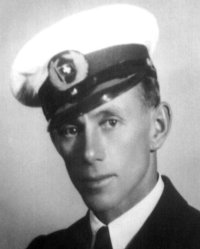
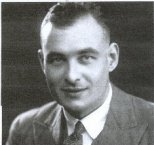
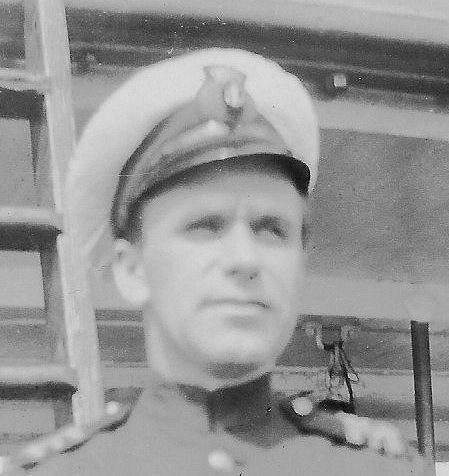
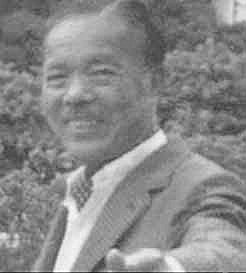
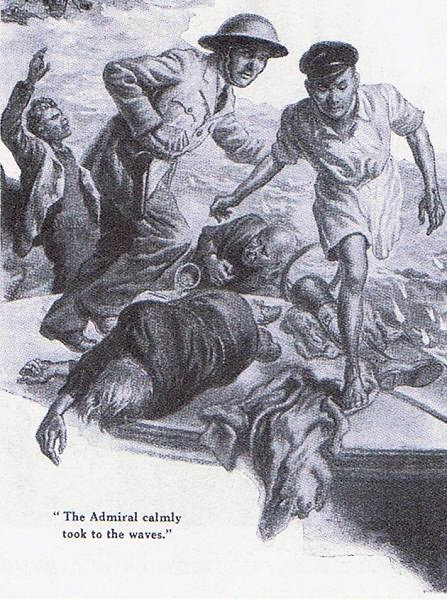
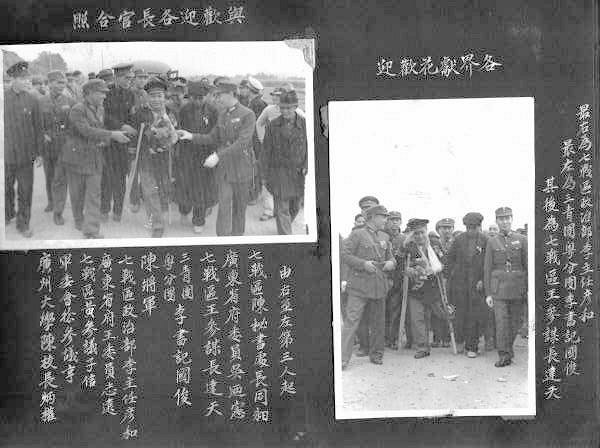
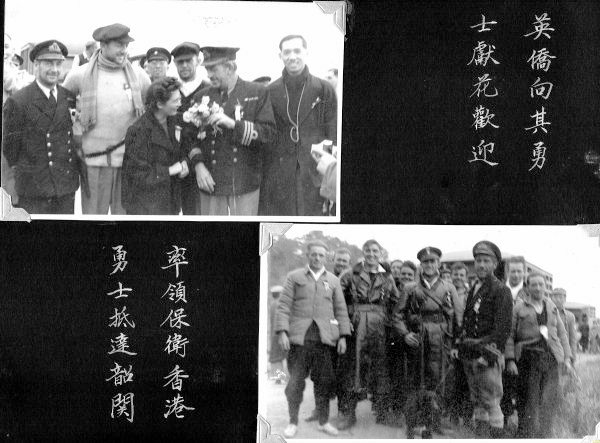
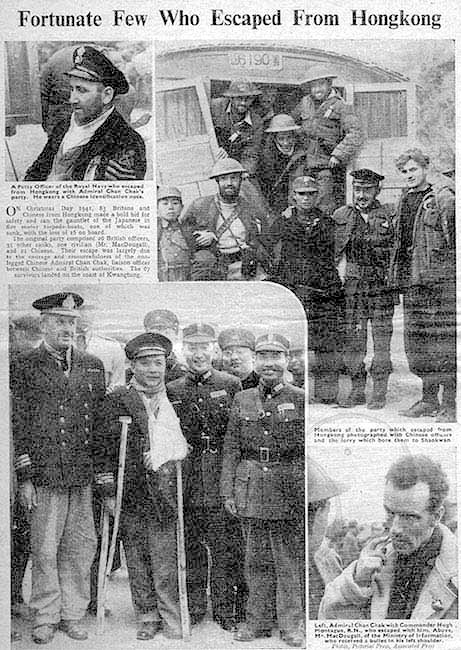
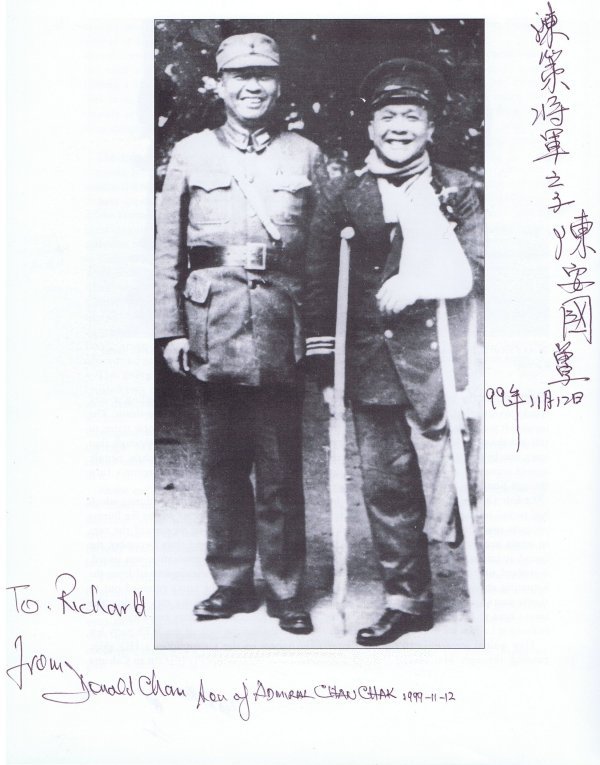
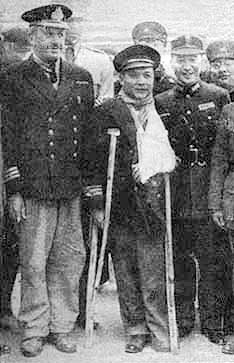
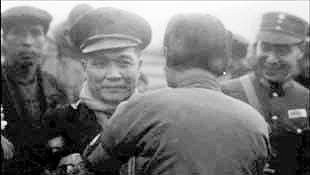
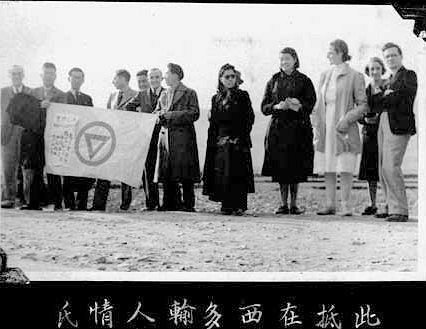
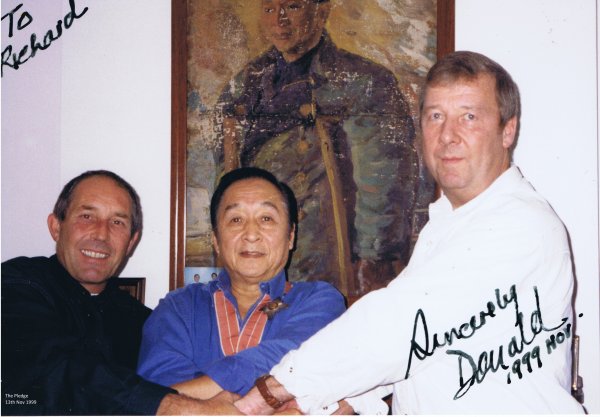
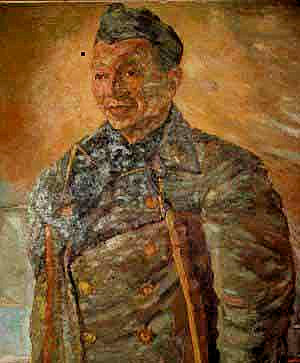
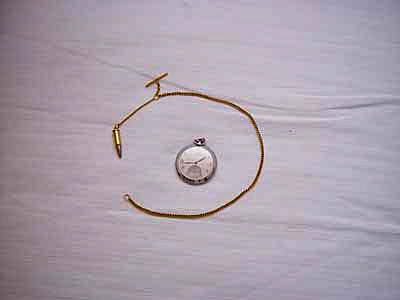 .
. 